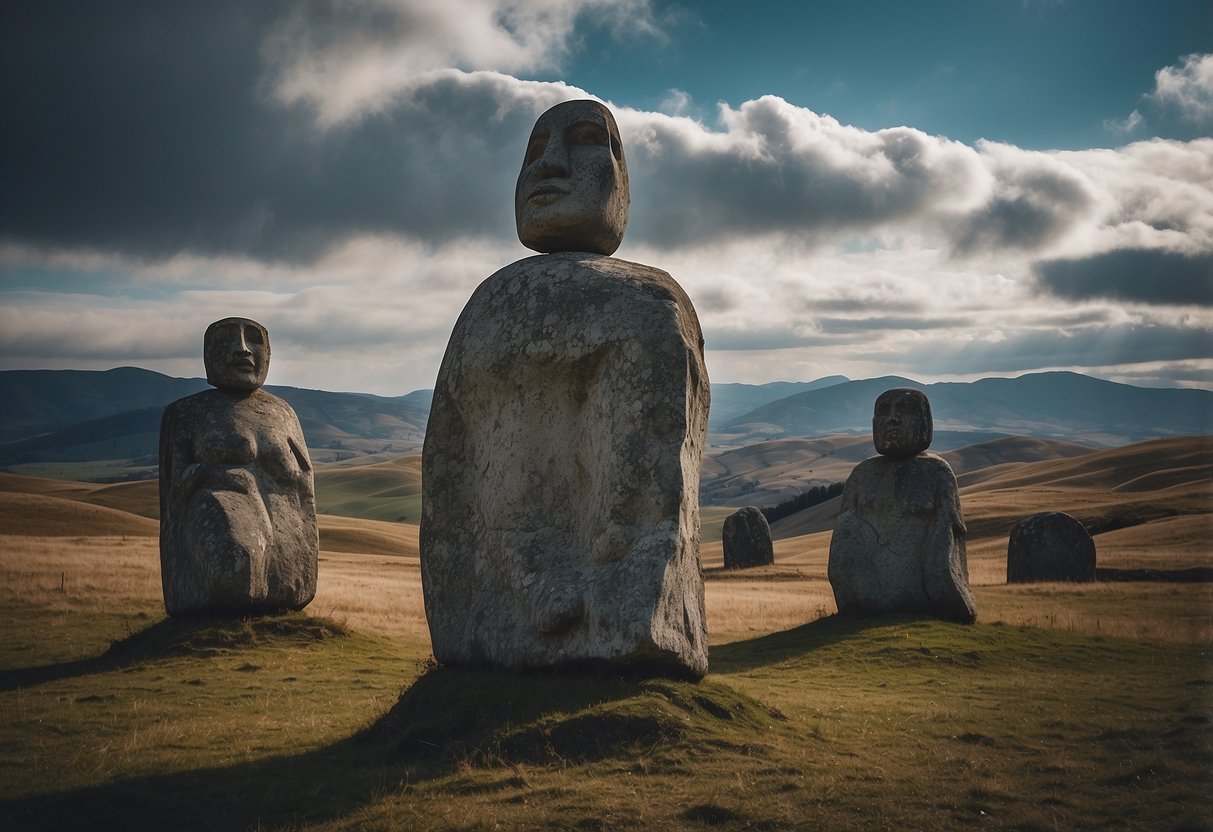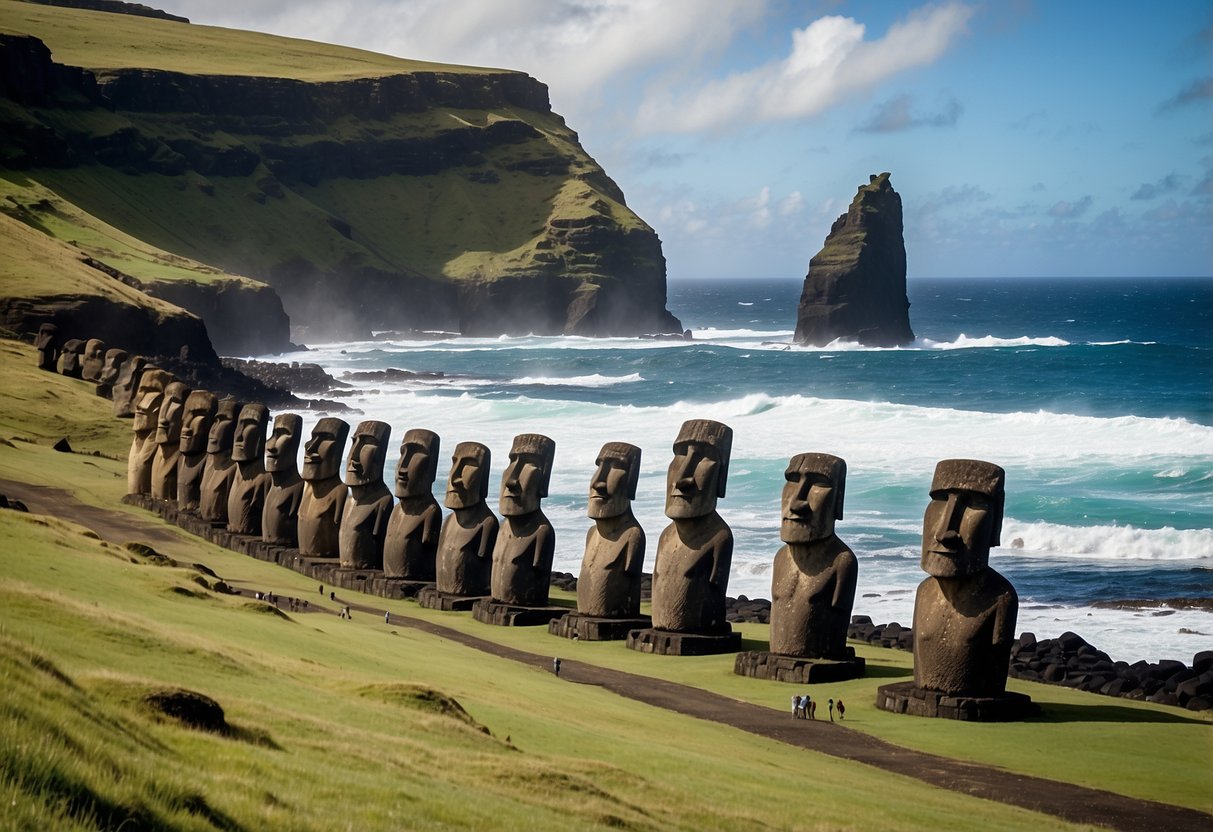
Cultural Insights
Easter Island, also known as Rapa Nui, is a land rich in history and tradition. From the Rapanui people and their distinct customs to the vibrant Tapati Rapa Nui Festival and the unique language traditions, there’s much to discover. Engaging with these cultural elements provides a deeper understanding of the island’s heritage and contemporary life.
Rapanui People and Traditions
The Rapanui people have a deep connection to their land and ancestors. They are known for their impressive stone statues, called moai, which are a significant part of their cultural heritage. These statues were carved by the early inhabitants of the island to honor their ancestors and are still vital to the local identity today.
Traditional customs, such as crafting and storytelling, remain significant. Handicrafts, often depicting the moai, are sold in local markets and offer insight into the island’s artistry. Dance is another essential tradition, with performances that showcase the history and legends of the Rapanui people. These dances are not just entertainment; they are a crucial way of preserving and transmitting culture.
Tapati Rapa Nui Festival
The Tapati Rapa Nui Festival is one of the island’s most important cultural events. Held annually in February, this festival celebrates Rapanui heritage through a series of activities that include traditional sports, music, and dance. Competitions such as stone carving, swimming, and canoeing take center stage, highlighting the islanders’ skills and endurance.
Dance shows are a vibrant part of the festival, with performers dressed in elaborate costumes. These dances tell stories of the island’s history and mythology, offering an immersive cultural experience. Visitors during the festival can witness a powerful display of Rapanui pride and community spirit that brings the entire island together in celebration.
Language and Expression
The Rapanui language is a critical aspect of the island’s cultural identity. Though Spanish is widely spoken, many locals still use the Rapanui language in daily life. Efforts are ongoing to preserve and promote it, including educational programs and cultural initiatives that encourage younger generations to learn and use the language.
Music and song are also essential forms of expression. Traditional songs often accompany dance performances and ceremonies, reflecting the island’s history and values. Through language and music, the Rapanui people maintain a strong connection to their heritage, ensuring that their unique cultural identity endures.
Monumental Moai Statues

Easter Island’s monumental Moai statues are an awe-inspiring sight, rich in history and cultural significance. These statues, primarily found at key archaeological sites, are integral to understanding the island’s ancestral heritage.
The Making and Meaning of Moai
The Moai statues were carved between the 13th and 16th centuries. Located mainly at Rano Raraku, the quarry where almost all Moai were created, these figures were carved from volcanic tuff. Each statue often represents deified ancestors and was believed to embody spiritual and political power.
Standing tall and imposing, the Moai range in height from several feet to over 30 feet. A notable aspect is their oversized heads, which comprise about three-eighths of the statue’s height. This distinctive feature has puzzled researchers for decades.
The effort required to carve and transport the Moai showcases the islanders’ ingenuity. Moving these massive figures involved complex engineering techniques, indicating a sophisticated understanding of mechanics and communal resources.